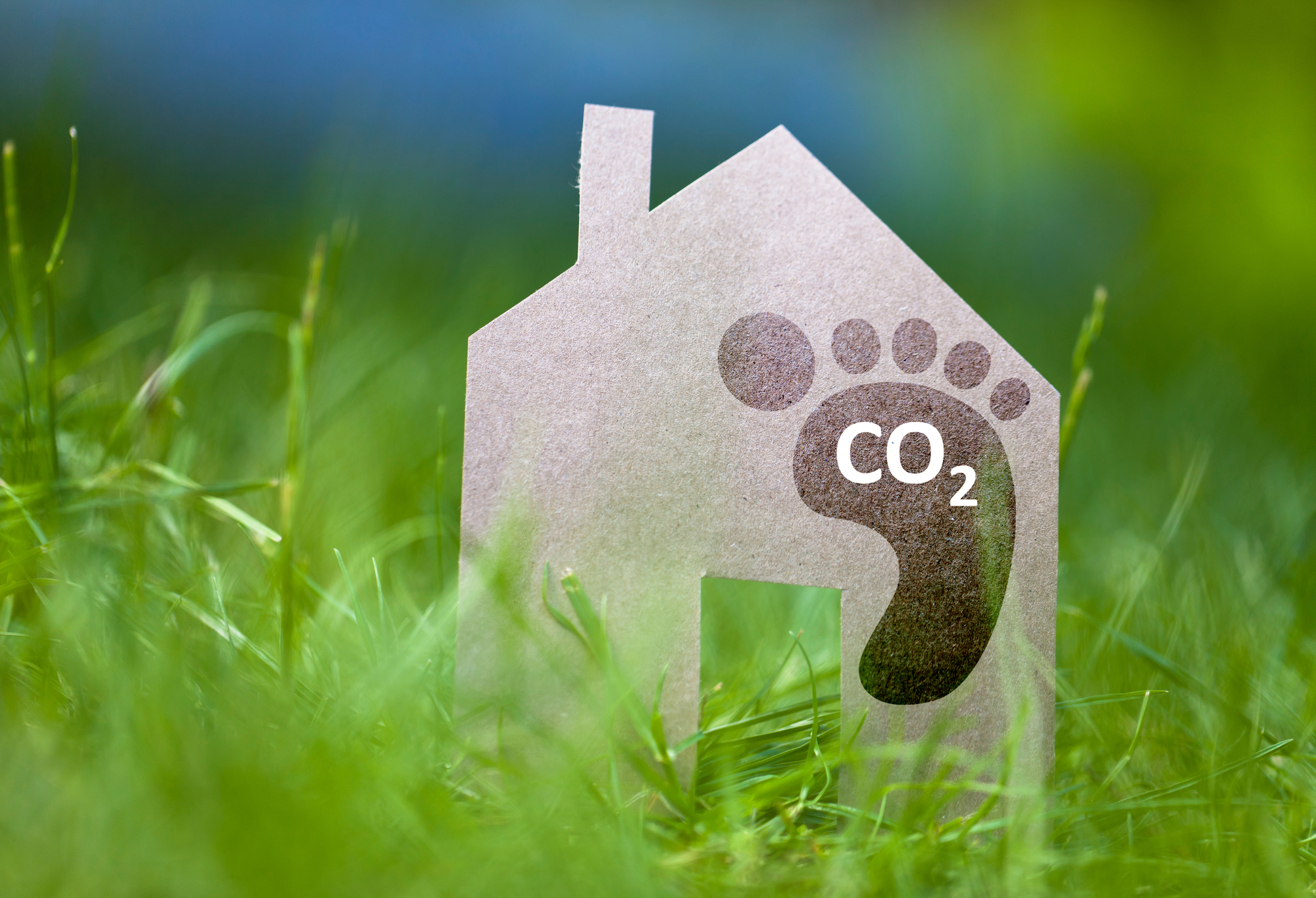Reducing Your Home’s Carbon Footprint
The term “carbon footprint” has gained increasingly widespread and mainstream use in recent years — to the point that you’ve most likely heard about it by now. For many, however, there is still a lack of clarity around the actual definition of a carbon footprint.
According to Nature.org, a carbon footprint is, “the total amount of greenhouse [gasses] (including carbon dioxide and methane) that are generated by our actions.”
With an increasing cultural awareness of our carbon footprints, many have gained a sense of personal responsibility t in protecting and maintaining our planet for our sake and the sake of future generations.
That is why it is important to understand not only your carbon footprint and its effect on the planet, but also how to reduce your carbon footprint to minimize its impact.
How To Calculate Your Home’s Carbon Footprint
To know how much you should reduce your carbon footprint, it is first important to have an actual understanding of what your carbon footprint looks like. Fortunately, the United States Environmental Protection Agency (EPA) provides a household carbon footprint calculator that takes several factors and will calculate your carbon footprint for you.
Benefits of Lowering Your Home’s Carbon Footprint
The most important benefit attached to lowering your carbon footprint is doing your part in maintaining a healthier Earth for us and future generations to call home. However, that is far from the only benefit you will see from lowering your home’s carbon footprint.
Here are some of the greatest benefits of lowering your household’s carbon footprint you might see:
Mitigate the Effects of Climate Change
Given the dire global importance of combatting the effects of climate change, this is likely the biggest motivator for the general public in reducing their carbon footprint. Lowering your carbon footprint may seem like a small action to take against the large issue of global climate change, but through the combined efforts of many people working to lessen their carbon footprint, a far greater positive impact can be made.
Improved Public Health
Reducing Greenhouse gasses improves public health in numerous ways, such as reducing the chances of severe weather events, improving air and water quality, and supporting global food production. According to research by scientists at NASA, Duke University, and Columbia University, reducing greenhouse gas emissions is not only necessary to fight long-term climate change, but also has significant shorter-term effects on public health.
According to that research, “reducing global emissions over the next 50 years to meet the goal of the Paris Agreement to keep global warming under 2°C through the end of the century would prevent about 4.5 million premature deaths, 1.4 million hospitalizations, and emergency room visits, 300 million lost workdays, 1.7 million incidences of dementia, and 440 million tons of crop losses in the United States.”
Lowering Your Utility Bill
Many of the methods you can use to reduce your carbon footprint also happen to be great ways to lower your utility bill as well. That is because, according to the U.S. Energy Information Administration, the vast majority of energy consumption in U.S. homes comes from space heating, water heating, air conditioning, lighting, and refrigeration. By upgrading these amenities in your home to be more energy efficient, not only can you greatly reduce your carbon footprint, but you will also lower your monthly bills at the same time.
5 Ways To Lower Your Home’s Carbon Footprint
Now that we have figured out how to calculate your carbon footprint and have discussed the benefits of reducing your footprint, we need to look at methods of actually reducing your carbon footprint. Let’s take a look at five practical methods of lessening your and your home’s carbon footprint.
1. Upgrade to Energy Efficient Appliances
One way to lower your home’s carbon footprint is by upgrading your home appliances to energy-efficient ones. Using energy-efficient appliances in conjunction with other methods to even further reduce your monthly electric bill is an especially effective way to lower your home’s carbon footprint. This may seem like a pricey task, but it’ll save you more money in the long run. Plus, you’ll be doing the Earth a favor in the process.
2. Start a Compost Pile
By starting a compost bin, you are taking food waste items that would normally have a negative impact on the environment if they ended up in a landfill and instead are reinvesting it into a positive use for the earth. This is because composting minimizes the production and emission of greenhouse gases into the atmosphere.
Starting a compost bin or pile can also save you money by adding time to the life of your garbage disposal since many of the items you should avoid putting down your garbage disposal are also compostable.
3. Upcycle Furniture
Unfortunately, one of the greatest sources of waste on the planet is the furniture industry, which is why buying and/or upcycling used furniture is a great way to reduce your carbon footprint.
This might be in the form of buying used furniture instead of something new to reduce deforestation and carbon emissions resulting from the production of new furniture. It also can take the form of reusing old furniture for a new purpose or selling it to someone else to use instead of throwing it away, which can emit carbon through transportation to the landfill.
4. Install Solar Panels
Solar energy is an incredibly efficient means of powering your home, and is substantially better for the environment than fossil fuels and other alternatives. By installing solar panels on your home you can harness this energy source for yourself and reduce your and your home’s overall carbon footprint.
If you have a modern electric water heater system installed, solar panels can also be used as part of your home’s water heater system, meaning that installing solar panels on your home is a great solution for more than one of your home’s utilities.
5. Upgrade Your Home’s HVAC System
As mentioned, one of the biggest impacts on your utility bill, and your carbon footprint in general, are different appliances in your house, including your HVAC system. Even an older HVAC system or one that hasn’t been serviced can run inefficiently. As such, you should look into servicing your system by a professional HVAC technician or possibly even fully replaced.
Whether your home needs heating maintenance, air conditioning maintenance, or a whole new HVAC system, if your home’s current system is not running its best then it is likely leaving a larger carbon footprint than necessary. By having your HVAC system upgraded to a more efficient one then your home will release fewer greenhouse gasses and reduce your carbon footprint.

